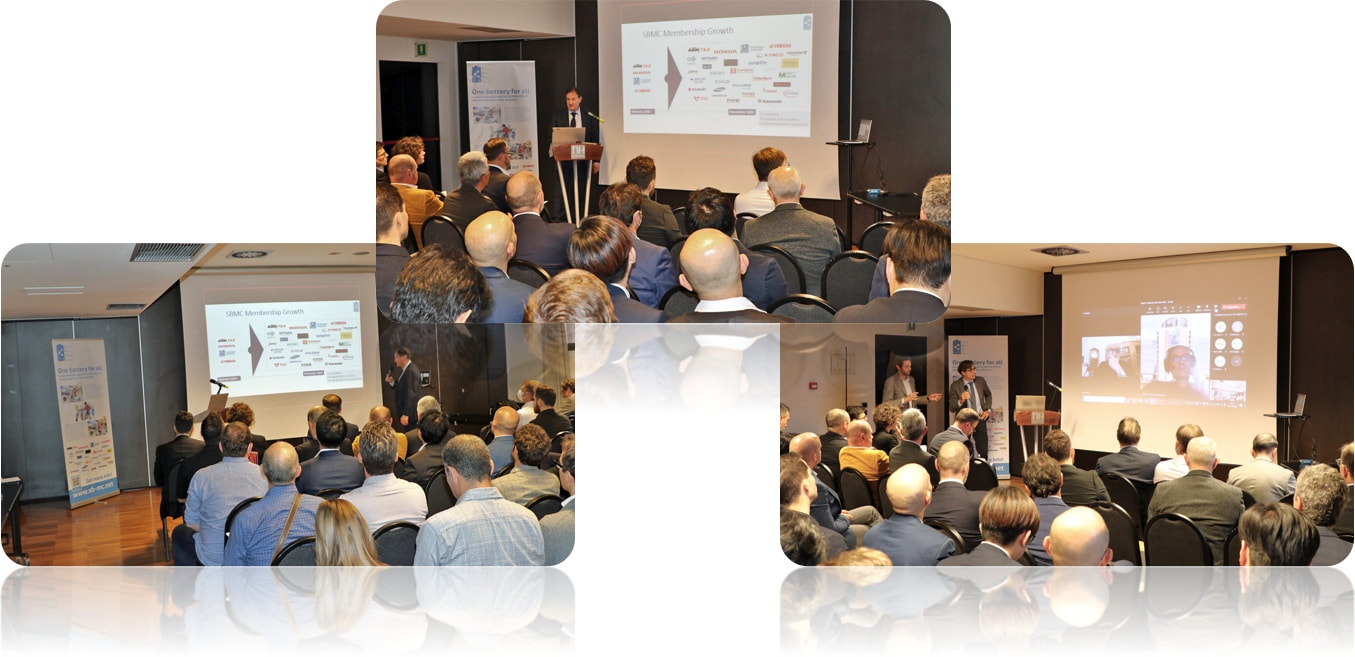|
More than 25 companies gathered at the Swappable Batteries Motorcycle Consortium “Stakeholders meeting” on November 9th in Milan. The international motorcycle exhibition EICMA provided an excellent frame for it, with showcasing many new models of electric Powered Two Wheelers. SBMC welcomed representatives of various European institutions. Mr Thierry LEGRAND (Account Manager Mobility at the CEN-CENELEC) and Mr Cesar SANTOS GIL (Policy Officer for Circular Economy Unit at DG ENVI) took part in the meeting and contributed to the discussions. Battery swapping across brands made possible
Light vehicles are especially suitable for compact and low-voltage batteries. Nowadays, most scooters and motorcycles used for daily commuting are within the so-called 50cc and 125cc category and have a performance ranging to a maximum of 11 kW. SBMC will emphasize a reference battery which will bear an energy mark up to 2 kWh, enabling a relative low weight per battery pack – below 12 kg and relative handling dimensions. With a 48 Volt solution, these batteries are easy to handle and are classified as low-voltage equipment (voltage class A limits) in terms of European regulation. This makes it safe and user-friendly for riders to swap, store and recharge. The objective of SBMC is ensuring that batteries can be exchanged among different brands and types. Thus, swapping stations will be one of the key focus areas of the initiative. To make it safe and convenient for users, electrical, mechanical and safety requirements are addressed too and will be in line with existing and upcoming European and International Regulations. Standardization in progress SBMC concentrates on items such as geometry, mechanical fixing, connectors, and is finalizing the identification of the last relevant items, as key parameters towards interoperability through standardization. As next step, SBMC is carefully taking into consideration also the aspects related to the connectivity of the battery and its infrastructure, as well as cybersecurity. In line with potential requirements, originating from upcoming EU Battery Regulations, and EU Radio Equipment Directive, battery and environmental performances, communication parameters and state machine architecture will be considered for feeding standardization work to guarantee interoperability, safety, security and data protection & cybersecurity. SBMC has already formal liaisons with CEN’s and CENELEC’s TCs/JTCs.
0 Comments
|


 RSS Feed
RSS Feed